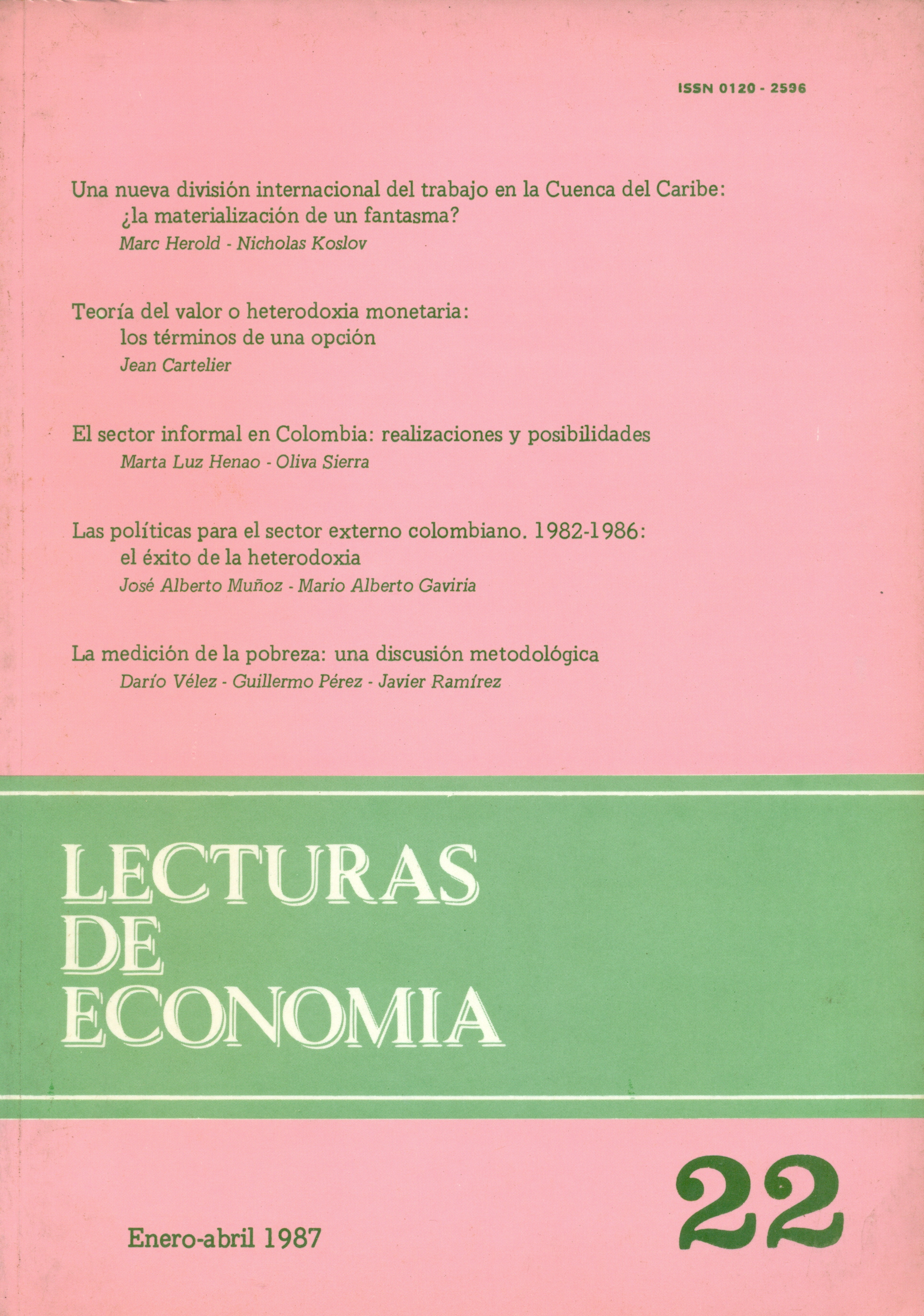Teoría del valor o heterodoxia monetaria: los términos de un opción
DOI:
https://doi.org/10.17533/udea.le.n22a7928Abstract
• Resumen: La presentación habitual de la economía política como compuesta por diferentes corrientes -según la teoría del valor que se adopte por ejemplo- oculta esta oposición más fundamental: la escogencia analítica crucial es entre el análisis real -es decir, la teoría del valor- y el análisis monetario. La primera descansa en la exclusión de la moneda y describe el carácter cuantitativo de las relaciones económicas mediante precios o valores asociados a una lista dada -a priori- de bienes. La segunda no necesita ninguna hipótesis de nomenclatura y parte del dinero concebido como un conjunto de bienes. Se sostiene aquí que el análisis real implica, necesariamente, un proceso de ajuste (el mercado). Desafortunadamente, no disponemos de ninguna teoría que satisfaga tal mecanismo social. La heterodoxia monetaria permite una presentación más fructífera de la economía. En particular, dos rasgos esenciales de la sociedad pueden así ser verdaderamente tratados: la crisis y la heterogeneidad entre empresarios y asalariados.
• Abstract: The common presentation of political economy as composed of various currents (for example, depending on the theory of value adopted) obscures a more basic distinction: that between real analysis and “monetary analysis". The former starts out from bundles of goods and hence requires a theory of value. The other, by contrast, postulates the existence of money in terms of bundles of goods. While real analysis is crippled by its dependence on the social mechanism of markets which lies outside its theoretical formulation, "monetary analysis" permits a more fruitful approach especially to such questions as crises and the differences between employees.
Downloads
Downloads
Published
How to Cite
Issue
Section
License
Copyright (c) 2011 Jean Cartelier

This work is licensed under a Creative Commons Attribution-NonCommercial-ShareAlike 4.0 International License.
This page, by Universidad de Antioquia, is licensed under a Creative Commons Attribution License.
Authors who publish with this journal agree to retain copyright and grant the journal right of first publication, with the article licensed under a Creative Commons Attribution-NonCommercial-ShareAlike License allowing others to share it as long as they acknowledge its authorship and original publication in this journal.
Authors can enter into separate, additional contractual arrangements for the non-exclusive distribution of the journal's published version of the work (e.g., post it to an institutional repository or publish it in a book), provided that these arrangements be not for profit and the journal be acknowledged as the original source of publication.
Authors are permitted and encouraged to post their papers online (e.g., in institutional repositories or on their websites), as it can lead to valuable exchanges as well as greater citation of the published work.







